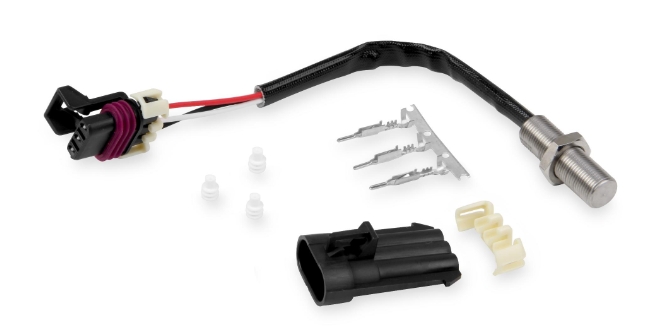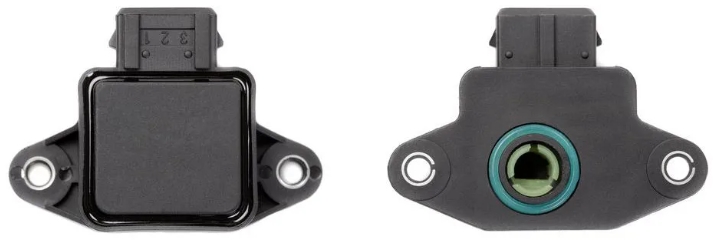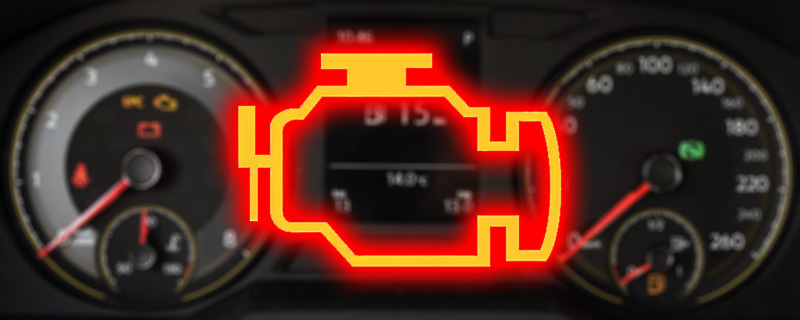Signs of a Faulty Camshaft Position Sensor and How to Test It?

Automobiles have a variety of electrical components, one of which is called the camshaft position sensor (CMP). This section will discuss this component, the signs that indicate a problem with the camshaft position sensor, and the procedure for dealing with it.
What exactly is a position sensor?
Every modern automobile is equipped with a camshaft position sensor. Since it verifies that the car's engine is running properly, this sensor is an essential component of every automobile.When looking for the sensor under the hood of your car, you will need help to find it. The sensor is located near the engine and its placement is usually determined by the particular car manufacturer.
It's possible to find it behind the cylinder filler, in the car's lifter valley, or next to the engine block.
The Role of the Camshaft Position Sensor
Let's look at an example of how a camshaft position sensor works so you can better understand its purpose. When an internal combustion engine is started, the camshaft is responsible for opening the engine valves.This allows the engine control module to direct air and fuel into the combustion chamber. After that, each valve closes in preparation for the piston to begin compressing air and fuel.
When the piston reaches its highest point, the engine control module sends out a command to start the combustion process, which pushes the piston down and generates power. At this point, the camshaft opens the exhaust valves and the piston returns to its original position, releasing exhaust gases from the exhaust manifold.
Combustion also occurs in the engine due to the camshaft position sensor and other components.
Camshaft Position Sensor Location

The exact location of the camshaft within the engine depends on the specific make, model and configuration of the machine. However, it will be located near the camshaft in some way.
You will usually find the camshaft position sensor located near or on top of the front side of the engine. It may be located on top of the cylinder block, at either end of the intake manifold, and usually near the timing cover.
The camshaft sensor is usually located behind the timing cover. For some easy and simple way to check it, just remove the engine surface and you will find it located at the back of the machine.
Types of Camshaft Position Sensors
There are three main types of camshaft position sensors:- Magnetic sensors
- A.C. output sensors
- Hall effect sensors
Magnetic Sensors

A magnetic camshaft position sensor can be identified with two wires. This will produce a voltage consisting of an AC sine wave. It can be located in the distributor or on the camshaft.
Because it is close to the camshaft, which has a device with permanent magnets attached, the magnetic field of interest generates a pulse that is sent to the ECM for analysis each time an attractive force passes over the sensor.
A.C.Output Sensors
There are several special types of camshaft position sensors, and one of their outputs is an AC voltage signal.The ECM generates a very high frequency, ranging from 150 to 2500 cycles, and sends it to an excitation coil located near a rotating disk.
There is space inside this disk, located at the end of the camshaft, to allow for rotation. As the distance passes through the loop, mutual inductance causes the coil to be excited. This causes the electronic control module to receive a signal indicating the position of the first cylinder.
Hall effect sensors
However, the camshaft sensor we are discussing here has three wires. The first wire provides reference power to the device, the second wire provides ground to the machine, and the third wire transmits the signal voltage to the computer.
The Hall effect sensor has two other locations: inside the distributor and on the camshaft. It is equipped with a screen with slots and a magnet mounted on the shaft.
The sensor opens and closes whenever the screen moves in front of or behind the target to which it is attached. As long as there is a continuous layer of screen in front of the sensor, the feedback voltage will be disturbed even if the magnetic field is splitting.
Position Sensor Symptoms

The following is a list of the most common symptoms that may occur:
- Check engine light
- Engine stalls
- Car will not start
- Erratic idle speed
- Reduced engine power
- Poor fuel efficiency
Check Engine Light

The “Check Engine” light comes on to indicate that the camshaft position sensor is almost always faulty. When the light finally comes on, it may be necessary to identify the problem.
By using the OBD2 scanner to check your vehicle for any problem codes, you can get a better idea of what is going on. If you need to use an OBD2 scanner, you should take your car in for repair.
If you can, you should avoid driving your vehicle when the warning light is on, as doing so could cause more damage. It is assumed that you know the reason why the check engine light comes on.
In this case, you may be allowed to drive your vehicle to a repair store if you have permission from a certified professional technician or someone with equivalent expertise.
Engine Stalling
You should not drive your vehicle if you suddenly realize that the engine will not start. This problem can occur due to insufficient combustion in the combustion chamber because fuel and air have not been properly introduced.
Vehicle will not start
Just like almost any other condition, there are multiple possible causes for this symptom. Vehicle won't start can also be caused by a malfunctioning starter, a clogged fuel filter, a dead battery, or one of many other potential problems.
Erratic Idle
Unsynchronized combustion in the cylinders is the root cause of an erratic idle, which suggests a problem with the camshaft position sensor. A faulty fuel pump or EGR valve are two other potential causes of an erratic idle.
Regardless of the cause, it is critical to understand what is causing the severe idle. Finding the cause may require the use of specific additional tools as well as some experimentation.
Reduced Engine Power
The engine power decreases when the vehicle accelerates and the engine speed decreases when coasting or idling. Vibration may also occur when the vehicle accelerates. Poor combustion and misfires in the engine cylinders are the culprits for all these problems.
Fuel Inefficiency
This will result in more fuel not being burned, leading to poor fuel economy. Since this condition lasts for a long period of time, this symptom may be more difficult to detect. You also need to know your car's typical mileage per gallon of gasoline.
How do I test the camshaft position sensor?
- First, locate the power, ground, and signal wires using the manual in your auto repair kit. Then, test the sensor circuit using the “DC Voltage” mode on your multimeter.
The ground wire from the meter should be in contact with the black probe and the other probe should be connected to the power wire. Check the readings you obtain against the requirements listed in your manual.
- Ask your helper to turn the crank or start the engine.
Remove the sensor and scrutinize it for any signs of physical damage or contamination.
- If you can't identify any problems with the camshaft position sensor or the circuit, it could be part of the problem. You may be experiencing intermittent failures or component failures related to this problem. For example, you may have a timing belt or tensioner that has become brittle or overstretched from overuse.
How do I reset the camshaft position sensor?
It's impossible to turn against the camshaft position sensor on a built-in engine because it functions similarly to a magnet, turning on and off as the camshaft rotates. However, you can use it instead.The camshaft position sensor operates by opening or closing the sensor with suction when the camshaft is nearby. Upon completion of this activity, the camshaft sensor will be gradually installed before you begin operation; double-check that the camshaft position sensor is installed correctly.
The camshaft works by determining the position of the camshaft and transmitting that information to the ECU, which then uses that information to determine how to proceed with the fuel and combustion process.
With the help of the camshaft position sensor, the engine's electronic circuit unit knows the position of the camshaft at all times. As a result, it can determine the valve components and subsequent movements.
The movement of the camshaft affects the position of the fuel and exhaust valves; by synchronizing the timing, fuel is distributed to the cylinders and ignited at the right moment.
Conclusion
Camshaft position sensors monitor the rotation of the camshaft, paying particular attention to the timing of valve opening and closing. Most camshaft sensors are located directly above the grooved ring on the camshaft.The vast majority of camshaft sensors will use magnets to generate or change an AC electrical signal. This signal will be used in conjunction with the crankshaft position sensor to determine when the position on the compression stroke is getting closer to the top stop.
FAQ:
-
What happens if the camshaft sensor fails?
A camshaft position sensor that begins to break down will gradually lose its ability to send data in a timely manner. If there is a mismatch between fuel supply and ignition timing, your car will hiss, accelerate slowly, lack power, stall or even die. This can happen even if the timing error is only a few milliseconds.
-
What is the lifespan of the camshaft sensor?
The camshaft position sensor in your vehicle has the same lifespan as the car itself. However, in the vast majority of cases, it will need to be replaced much sooner than that. Due to the heat generated by the engine, the camshaft position sensor is subject to a lot of wear and tear, just like any other sensor or switch on the vehicle.
-
Who operates the camshaft sensor?
The purpose of the camshaft position sensor is to determine the relative position of the camshaft in relation to the crankshaft. This data is sent to the Powertrain Control Module (also known as the PCM), which processes it and then uses it to regulate the fuel injectors and ignition system.







